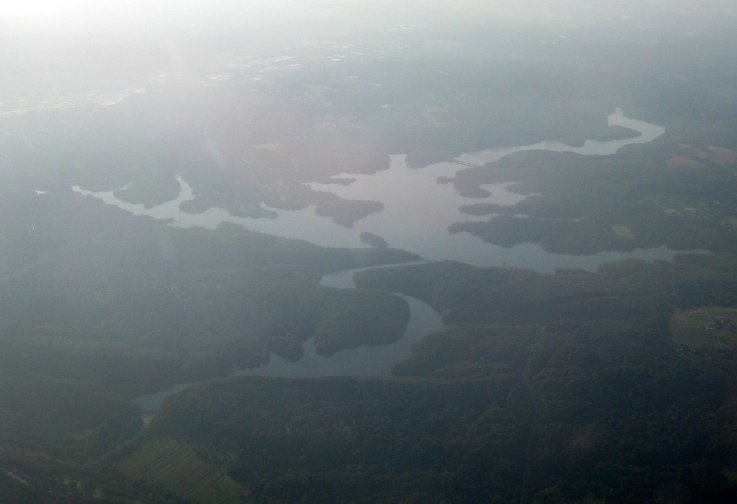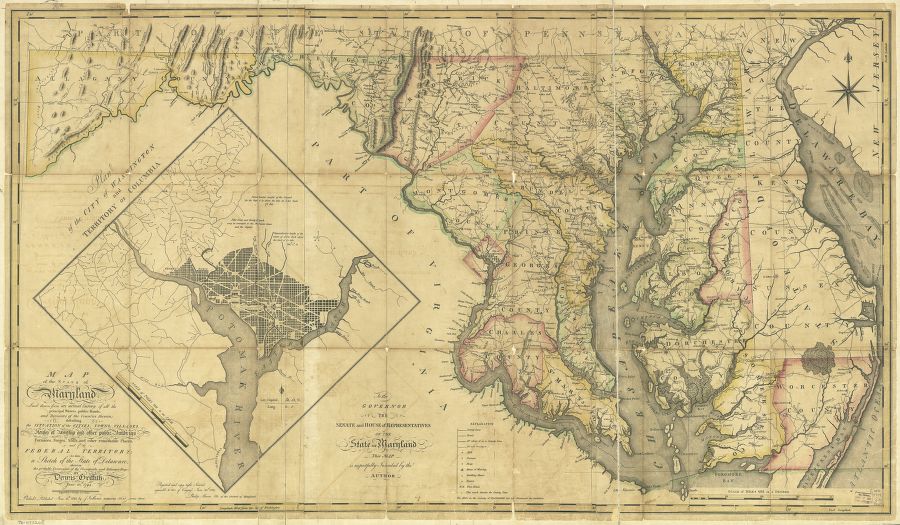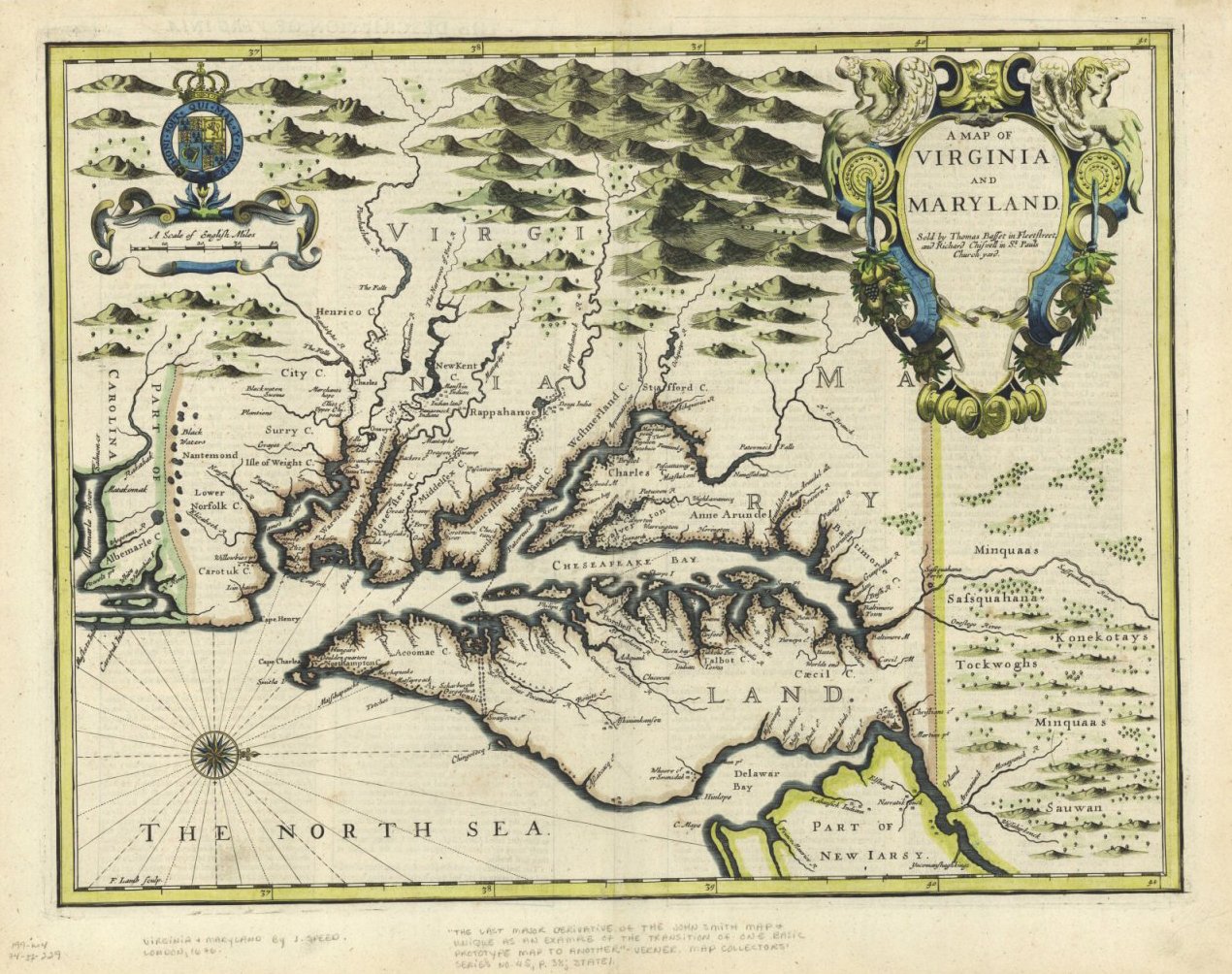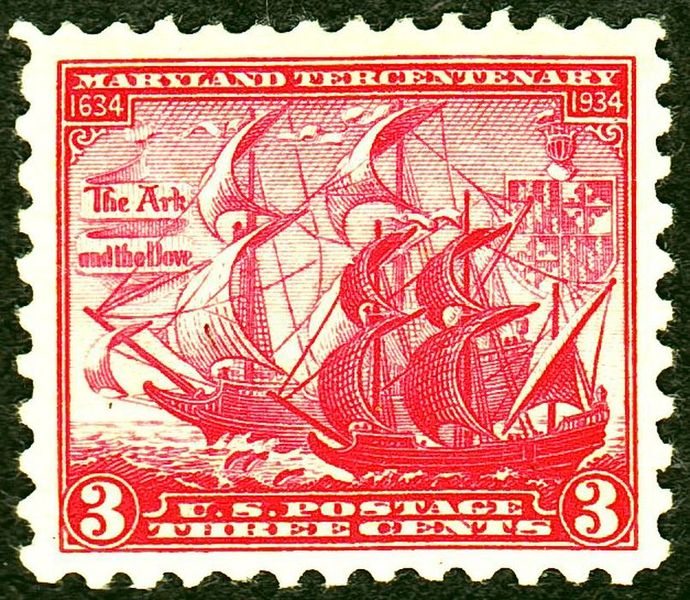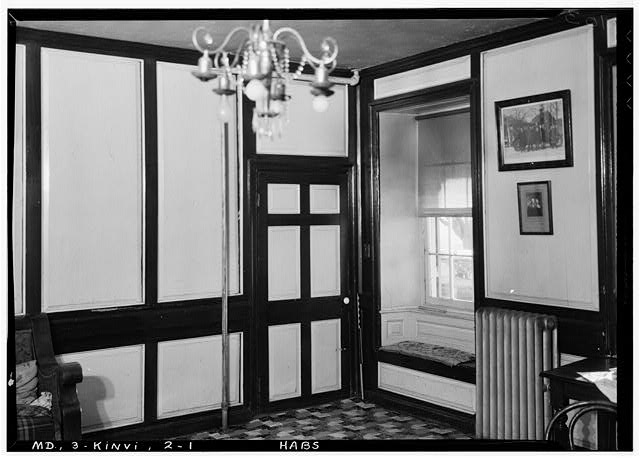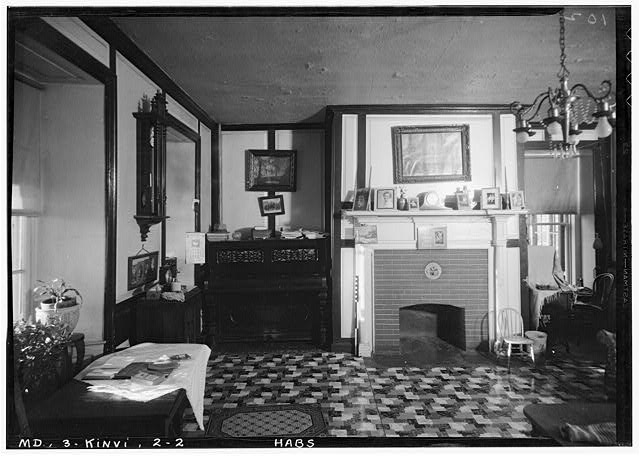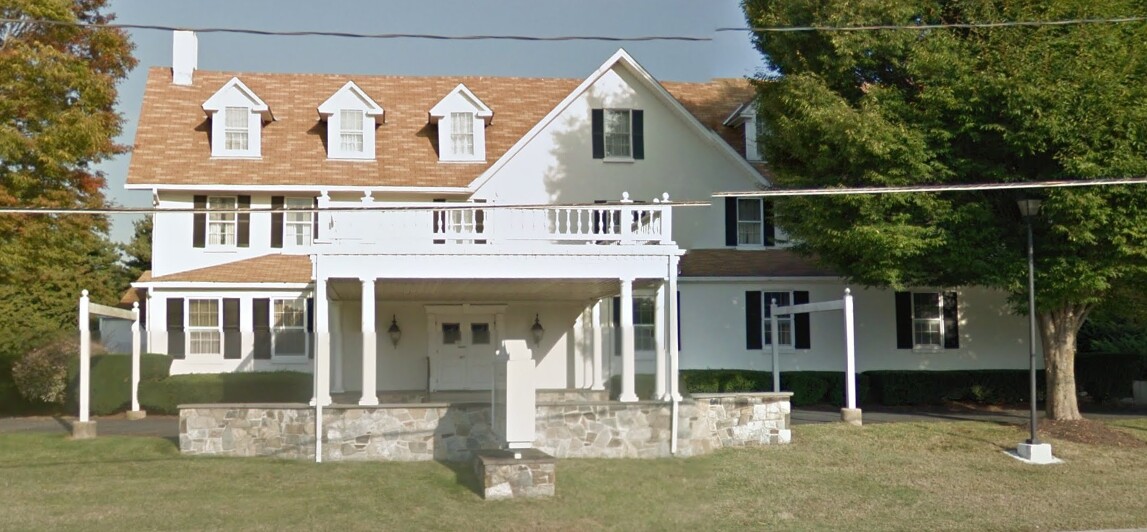Oblique air photo of Gunpowder River traveling through Loch Raven Reservoir, Maryland. August 2010. Photo by Jstuby [Public domain]. Available from Wikimedia Commons.
The Gunpowder River is a tidal inlet on the western side of Chesapeake Bay. It is formed by the joining of the Gunpowder Falls (also known as Big Gunpowder Falls) and the Little Gunpowder Falls. It is 6.8 miles long. The Gunpowder River and the Little Gunpowder Falls form the boundary between Baltimore and Harford Counties, Maryland.
My 8th-great-grandparents John Greer and Sarah Day lived by the Great
Falls of the Gunpowder River. Their land was surveyed in 1718.
The town of Joppa was located on the Gunpowder River and was an important colonial seaport. Tobacco was the main export.
In 1959, the Gunpowder Falls State Park was established to protect the Gunpowder River and the Big and Little Gunpowder valleys. The park includes trails, a beach, a marina, and areas for fishing, canoeing, and kayaking.
References
Gunpowder Falls State Park
Gunpowder River
Joppatowne, Maryland
Covering genealogy, family history, historical events and places, and anything else related!
Showing posts with label Maryland. Show all posts
Showing posts with label Maryland. Show all posts
Thursday, February 4, 2016
Monday, September 21, 2015
Mappy Monday: Maryland and Delaware, 1794
Griffith, Dennis; Thackara, James; and Vallance, John. Map of the State of Maryland laid down from an actual survey of all the
principal waters, public roads, and divisions of the counties therein;
describing the situation of the cities, towns, villages, houses of
worship and other public buildings, furnaces, forges, mills, and other
remarkable places; and of the Federal Territory; as also a sketch of the
State of Delaware shewing the probable connexion of the Chesapeake and
Delaware Bays. Philadalphia: J. Vallance, 1794. Library of Congress, Geography and Map Division.
Monday, June 29, 2015
Mappy Monday: Map of Virginia and Maryland
A Map of Virginia and Maryland. Francis Lamb. The Theatre of
the Empire of Great Britain, 1676. Huntingfield Collection, MSA SC
1399-1-197. Image from the Maryland State Archives, Charts and Maps Used by the Early Settlers of Maryland.
This map, which has been made available by the Maryland State Archives, depicts colonial Virginia and Maryland during the 1600s. Some of my ancestors lived in Maryland and Virginia during this time period.
This map, which has been made available by the Maryland State Archives, depicts colonial Virginia and Maryland during the 1600s. Some of my ancestors lived in Maryland and Virginia during this time period.
Wednesday, March 25, 2015
Maryland Day
Maryland Tercentenary postage stamp, 1934. By U.S. Post Office [Public domain]. Available from Wikimedia Commons.
March 25 is Maryland Day. The day commemorates the arrival of the first settlers in Maryland. On 22 March 1634, two ships, the Ark and the Dove, landed at St. Clemens Island (now St. Mary's County).
Maryland Day was first observed in 1903, after the State Board of Education chose March 25 as a day to honor local history. In 1916, the Maryland General Assembly authorized Maryland Day as a legal holiday.
My 9th-great-grandfathers James Greer and Nicholas Day lived in Maryland, in the Gunpowder River area. James Greer's son John (born about 1688) married Nicholas Day's daughter Sarah. They were my 8th-great-grandparents.
References
Maryland at a Glance: Maryland Day - March 25
Maryland Day
March 25 is Maryland Day. The day commemorates the arrival of the first settlers in Maryland. On 22 March 1634, two ships, the Ark and the Dove, landed at St. Clemens Island (now St. Mary's County).
Maryland Day was first observed in 1903, after the State Board of Education chose March 25 as a day to honor local history. In 1916, the Maryland General Assembly authorized Maryland Day as a legal holiday.
My 9th-great-grandfathers James Greer and Nicholas Day lived in Maryland, in the Gunpowder River area. James Greer's son John (born about 1688) married Nicholas Day's daughter Sarah. They were my 8th-great-grandparents.
References
Maryland at a Glance: Maryland Day - March 25
Maryland Day
Thursday, November 6, 2014
Those Places Thursday: Day-Deans-King House
In 1696, my 9th-great-grandfather Nicholas Day purchased land in Baltimore County, Maryland, in the area that is now Kingsville. In 1710, his son, also named Nicholas Day, constructed a stone house on the land. The house is located at 11750 Belair Road (Route 1), Kingsville.
In his will, written on 31 March 1739 and proved on 25 May 1739, the younger Nicholas Day left this land, called William the Conquerer, to his sons Thomas and Laban Day. In 1748, Thomas and Laban sold the property to Reverend Hugh Deans, the rector of In 1748, Thomas and Laban sold the property to Reverend Hugh Deans, the rector of St. John's Parish in Joppa Town. He lived on the property until his death in 1777. The house's two-story ell was probably added while Reverend Deans was living on the property.
In 1816, the property was purchased by Abraham King. The town of Kingsville got its name from Abraham.
In 1913, Frank J. and Caroline Groettner purchased the property, and it became a restaurant, the Kingsville Inn. In 1969, Lassahn Funeral Home purchased the property, and a wood-frame addition was constructed about 1990.
Historic American Buildings Survey. E. H. Pickering, Photographer. December 1936 - Kingsville Inn (Interiors), 11750 Belair Road (U.S. Route 1), Kingsville, Baltimore County, MD. Available from Library of Congress.
Historic American Buildings. Survey E. H. Pickering, Photographer. December 1936 INTERIOR SHOWING MANTEL - Kingsville Inn (Interiors), 11750 Belair Road (U.S. Route 1), Kingsville, Baltimore County, MD. Available from Library of Congress.
References
Kingsville, Maryland
Maryland Historical Trust Inventory of Historic Properties: Day-Deans-King House
Will of Nicholas Day, of Baltimore Co. dated 31 March 1738
In his will, written on 31 March 1739 and proved on 25 May 1739, the younger Nicholas Day left this land, called William the Conquerer, to his sons Thomas and Laban Day. In 1748, Thomas and Laban sold the property to Reverend Hugh Deans, the rector of In 1748, Thomas and Laban sold the property to Reverend Hugh Deans, the rector of St. John's Parish in Joppa Town. He lived on the property until his death in 1777. The house's two-story ell was probably added while Reverend Deans was living on the property.
In 1816, the property was purchased by Abraham King. The town of Kingsville got its name from Abraham.
In 1913, Frank J. and Caroline Groettner purchased the property, and it became a restaurant, the Kingsville Inn. In 1969, Lassahn Funeral Home purchased the property, and a wood-frame addition was constructed about 1990.
Historic American Buildings Survey. E. H. Pickering, Photographer. December 1936 - Kingsville Inn (Interiors), 11750 Belair Road (U.S. Route 1), Kingsville, Baltimore County, MD. Available from Library of Congress.
Historic American Buildings. Survey E. H. Pickering, Photographer. December 1936 INTERIOR SHOWING MANTEL - Kingsville Inn (Interiors), 11750 Belair Road (U.S. Route 1), Kingsville, Baltimore County, MD. Available from Library of Congress.
11750 Belair Road, Kingsville, Maryland. From Google Earth.
References
Kingsville, Maryland
Maryland Historical Trust Inventory of Historic Properties: Day-Deans-King House
Will of Nicholas Day, of Baltimore Co. dated 31 March 1738
Friday, May 9, 2014
NGS 2014: Day 3
I started off Day 3 of NGS with Craig Roberts Scott's 8:00 session on the Virginia militia. I had not realized that by law, every able-bodied man had to be in the Virginia militia (although some people, such as those who did not believe in fighting, might choose not to show up). At 9:30 I heard A. B. Pruitt speak about land grants in Tennessee. I have many Tennessee ancestors, so this session was very relevant to my research. Ernest Thode's 11:00 session on online historic German newspapers was very relevant for me as well, because I am 1/4 German. Until I learned about this session, I had not realized that these newspapers were available online. It was very exciting news for me! I then attended the International Society for British Genealogy and Family History luncheon, where Michael Leclerc spoke about researching Benjamin Franklin's family. At 2:30 I attended Elizabeth Shown Mills' session "Problem Solving in the Problem-Riddled Carolina Backcountry". She demonstrated how contextual knowledge can help us to analyze the information in documents, and talked about research principles. At 4:00, I attended Patricia O'Brien Shawker's session "Marylanders Migrating South." My Greer ancestors migrated from Maryland to Virginia and then to North Carolina. In the evening, I went to the NGS banquet. It was another long day, but very educational!
Subscribe to:
Posts (Atom)

